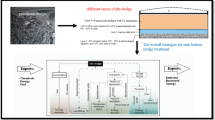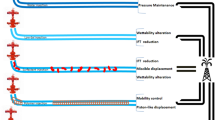Abstract
Increased rise of industries and car usage in Nigeria and urban development is exponentially on the increase giving rise to multiple waste generation. Evaluation of the different recycling processes showed that acid-clay process has the highest environmental risk as well as the lowest cost; hence, this work added a treatment method for the slurry produced after treatment with acid-clay method, thereby reducing the environmental concern caused by acid and acid sludge formed in the process. The acid ratio was varied between 0 and 20% and adsorbent ratio between 15 and 25%. Automotive-used lubricating oil and industrial-used lubricating oil were treated using two different samples, acid and adsorbent. An increase in acid concentration showed a significant difference over the properties of oil such as density, viscosity, flash point, and other physiochemical properties nevertheless increasing the amount of acid over the optimum point made on significant change. Varying of adsorbent ratio showed little significant effect to density and flash point, while yield and viscosity were unaffected. Optimum point being at 10% acid and 25% adsorbent gave optimal result. All metal contaminants are substantially removed; total base number was improved, while increase in flash point suggested the method effectiveness. Treatment of used industrial oil was found to be easier to re-refine due to less contamination.

















Similar content being viewed by others
References
Motshumi JD, Muzenda E, Tsietsi JPa (2013) A comparison of waste lubricating oil treatment techniques. 2nd International Conference on Environment, Agriculture and Food Science, 106-109.
Hamawand I, Talal Y, Sardasht R (2013) Recycling of waste engine oils using a new washing agent. Energies 6(2):1023–1049
Pavel F (2006) Design aspect of Used Lubricating Oil Re-Refining. Elsevier, Amsterdam
Harika E, Sebastien J, Philippe M, Jean B, Michel F (2011) Effect of water pollution on rheological properties of lubricating oil. Appl Rheol 21(1):1–9
Pal R (2001) Evaluation of theoretical viscosity models for concentrated emulsions at low capillary numbers. Chem Eng J 81(1-3):15–21
Morgan DV (2009) Choosing an oil purification method for modern turbine lubricating oils: tried and true methods no longer seem to be effective. AMS Filtrat
IETC (2013) Policy brief on waste oil: what, why and how.
BCRC (2002) Pretoria. Proceedings of a regional workshop on waste oil management in Africa. Cape Town. South Africa.
Gourgouillon D, Luc S, Stephane S (2000) An environmental friendly process for the regeneration of used oils. Environ Sci Technol 34(16):3469–3473
Boughton B, Horvath A (2004) Environmental assessment of waste oil management methods. Environ Sci Technol 38(2):353–358
Ihsan HT (2013) Recycling of waste engine oil using a new washing agent. Energies:1023–1049
Udonne JD, Bakare OA (2013) Recycling of used lubricating oil using three samples of acids and clay as a method of treatment. Int Arch App Sci Technol 4(2):08–14
Isah AG (2013) Regeneration of used engine oil, Proceedings of the World congress on Engineering 2013, vol 1. World Congress on Engineering, London
Layzell (2010) The re-recycling of used lubricating oil. VII-Energy-B-Rere Used Oil:54–68
Udonne J (2010) A comparative study of recycling of used lubrication oils using distillation, acid and activated charcoal with clay method. J Pet Gas Eng 2:12–19
Yang C-Y (2008) The feasibility studies on sonochemicals processes for the treating used oil: toxin reduction for eliminating recycle interference. Iris:10–20
Salem S, Salem A, Babaei AA (2015) Application of Iranian nano-porous Ca-bentonite for recovery of waste lubricant oil by distillation and adsorption techniques. J Ind Eng Chem 23:154–162
Abu-Elella R, Abu ME, Ossman R, Farouq M, Abd-Elfatah (2015) Used motor oil treatment: turning waste oil into valuable products. Int J Chem Biochem Sci 7:57–67
Lam SS, Liewa KK, Jusoh AA, Chong CT, Ani FN, Chase HA (2016) Progress in waste oil to sustainable energy, with emphasis on pyrolysis techniques. Renew Sust Energ Rev 53:741–753
Dalla GF, Lodolo OKA, Miertus S (2012) Compendium of used oil regeneration technologies. United Nations Industrial Development Organization, Trieste
Author information
Authors and Affiliations
Corresponding author
Additional information
Publisher’s note
Springer Nature remains neutral with regard to jurisdictional claims in published maps and institutional affiliations.
Rights and permissions
About this article
Cite this article
Oladimeji, T.E., Oguntuashe, K.M., Emetere, M.E. et al. Industrial- and automotive-used lubricating oils recycling cum acidic sludge treatment. Int J Adv Manuf Technol 106, 4157–4167 (2020). https://doi.org/10.1007/s00170-019-04751-6
Received:
Accepted:
Published:
Issue Date:
DOI: https://doi.org/10.1007/s00170-019-04751-6




